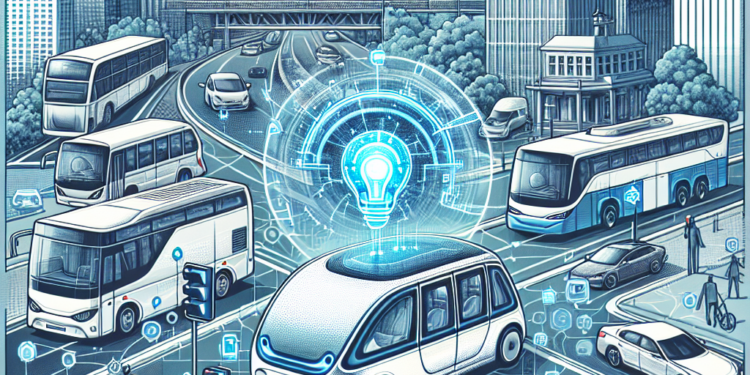AI in Transportation: Practical Applications
Artificial Intelligence (AI) has made its way into almost every aspect of our lives, and the transportation industry is no exception. From self-driving cars to traffic management systems, AI is revolutionizing the way we move from point A to point B. In this article, we will discuss some of the practical applications of AI in transportation and how they are changing the way we think about mobility.
Self-Driving Cars
One of the most well-known applications of AI in transportation is self-driving cars. Companies like Tesla, Waymo, and Uber are all working on developing autonomous vehicles that can navigate streets and highways without human intervention. These cars use a combination of sensors, cameras, and AI algorithms to detect and respond to their surroundings, allowing them to drive safely and efficiently.
Self-driving cars have the potential to revolutionize the way we think about transportation. They could reduce traffic congestion, lower the number of accidents on the road, and provide mobility options for people who are unable to drive themselves. However, there are still many challenges that need to be overcome before self-driving cars become a reality, such as regulatory hurdles, public acceptance, and safety concerns.
Traffic Management Systems
AI is also being used to improve traffic management systems in cities around the world. These systems use data from sensors, cameras, and smartphones to monitor traffic flow in real-time and make adjustments to signals and routes to optimize traffic flow. By using AI to predict and respond to traffic patterns, cities can reduce congestion, shorten travel times, and improve air quality.
One example of a city using AI for traffic management is Barcelona, Spain. The city has installed sensors throughout its streets that collect data on traffic flow, parking availability, and air quality. This data is then analyzed by AI algorithms to create recommendations for optimizing traffic flow, reducing emissions, and improving public transportation options. By using AI in this way, Barcelona has been able to reduce traffic congestion by 21% and cut emissions by 28%.
Predictive Maintenance
AI is also being used in the transportation industry to improve maintenance practices. By analyzing data from sensors and maintenance records, AI algorithms can predict when parts are likely to fail and recommend preventative maintenance actions. This proactive approach to maintenance can reduce downtime, increase the lifespan of vehicles, and save money on repairs.
One example of predictive maintenance in transportation is the use of AI to monitor the health of a vehicle’s engine. By analyzing data from sensors that measure engine temperature, pressure, and performance, AI algorithms can predict when a part is likely to fail and recommend a preventive replacement. This can help fleet operators reduce downtime and save money by avoiding costly repairs.
Route Optimization
AI is also being used to optimize routes for delivery vehicles, public transportation, and ride-sharing services. By analyzing data on traffic patterns, weather conditions, and customer preferences, AI algorithms can recommend the most efficient routes for vehicles to take. This can help reduce travel times, fuel consumption, and emissions, while also improving the customer experience.
One example of route optimization in transportation is the use of AI by logistics companies to plan delivery routes. By analyzing data on package sizes, delivery locations, and traffic conditions, AI algorithms can recommend the most efficient routes for delivery drivers to take. This can help reduce fuel costs, improve on-time delivery rates, and increase customer satisfaction.
Personalized Transportation
AI is also being used to provide personalized transportation options for individuals with unique mobility needs. By analyzing data on a person’s preferences, schedule, and physical abilities, AI algorithms can recommend the most appropriate transportation options for them. This can include everything from recommending the best public transportation routes to scheduling rides with ride-sharing services.
One example of personalized transportation in action is the use of AI by disability transportation services to provide accessible transportation options for individuals with disabilities. By analyzing data on a person’s mobility needs, such as wheelchair access or assistance with boarding, AI algorithms can recommend the most appropriate transportation options for them. This can help improve accessibility and independence for people with disabilities.
Conclusion
AI is revolutionizing the transportation industry in a variety of ways, from self-driving cars to traffic management systems. By analyzing data, making predictions, and optimizing routes, AI algorithms can help reduce congestion, improve safety, and provide personalized transportation options for individuals with unique mobility needs. While there are still challenges to overcome, the future of transportation looks bright with AI leading the way.













